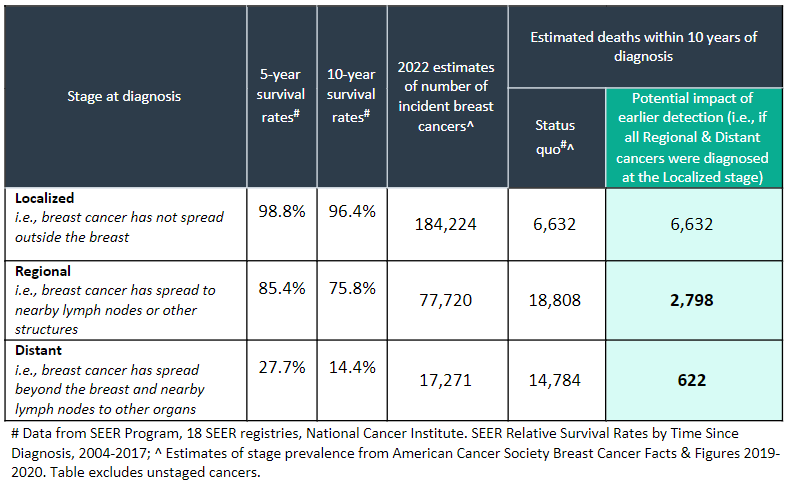The American Cancer Society (ACS) recently released their 2022 estimates of new breast cancer cases and breast cancer related deaths in the US, as well as separate statistics for African American/Black people. It’s rare these days to meet someone that hasn’t been touched by cancer in some way and still, these statistics are incredibly sobering. The ACS estimates that in 2022:
- 287,850 US women will begin their breast cancer journey, having been newly diagnosed with breast cancer;
- 43,250 women will die from breast cancer;
- Breast cancer will be the leading cause of cancer related death for women aged 20-59 years; and
- Black women will have 4% lower rates of breast cancer compared to White women, but a 41% higher mortality.
It’s easy to get desensitized by these statistics, but if we break down the predicted breast cancer deaths for 2022: Every single day, over 100 US families will have to tell loved ones that their mothers, daughters, sisters, and wives won’t ever be coming home. And this doesn’t even speak to the emotional and financial burden that patients, friends, and families must bear in supporting women following a breast cancer diagnosis.
Here at Volpara Health, we are committed to making a difference because we believe that so many of these deaths are preventable. SEER registry data collected by the National Cancer Institute clearly shows how much of a difference early detection of breast cancer can make. 96.4% of women diagnosed with localized disease (i.e., a cancer that has not spread outside the breast) are expected to still be alive 10 years after diagnosis, compared to only 14.4% of women diagnosed after the cancer has metastasized (spread beyond the breast).

Incorporating breast cancer stage estimates from the latest ACS Breast Cancer Facts & Figures report, 77,720 women are estimated to be diagnosed with regional disease and 17,271 with distant disease, in 2022. If all these breast cancers were found when still localized to the breast, it is estimated that there would be an almost 10-fold reduction in the number of deaths over the next 10 years (3,420 versus 33,592). And this is just US data – imagine the impact of early detection at a global level
As a researcher, I usually review data and statistics daily. But for those diagnosed with cancer, statistics take on a whole new meaning. A friend of mine who died of colon cancer wrote during her own cancer journey, “Statistically, I have six months if the chemo isn’t effective, and one to two years if it is”. Six months after she wrote that she passed away, just after her 30th birthday. Caught earlier, her death would likely have been preventable. I know full-well the grief that lingers and so, for those that have lost loved ones or are supporting those on their cancer journey, I hope that Volpara’s purpose and mission resonates with you, as it has done for me: to save families from cancer by preventing advanced-stage breast cancer.
We invite you to read an additional blog to examine how advanced technology designed specifically for breast care clinical practice can help improve early detection and save more families from cancer.

